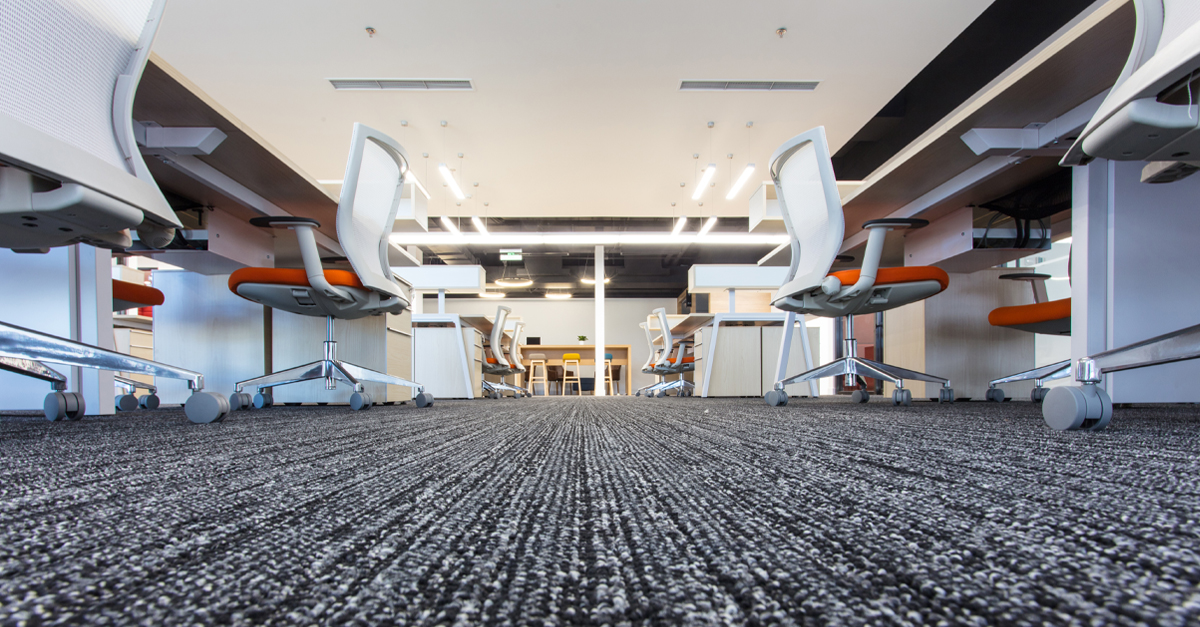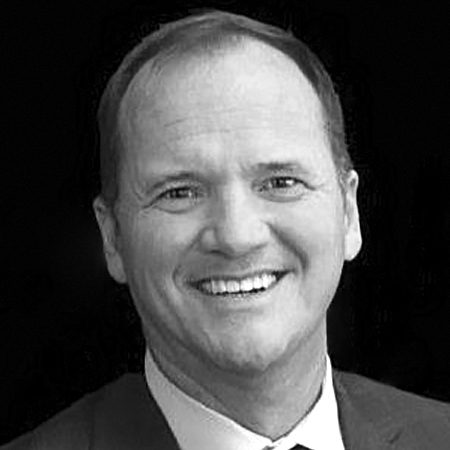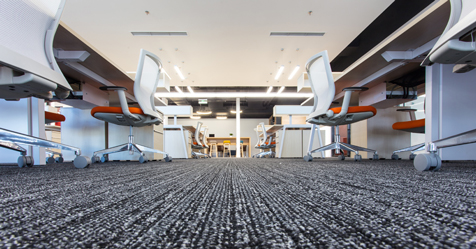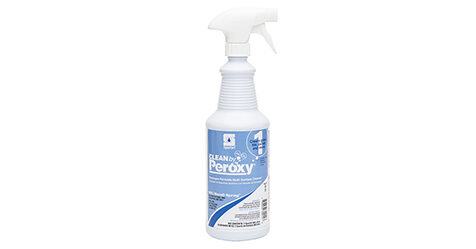To maintain a work environment that’s clean and inviting, it’s important to pay special attention to the areas that experience the most wear and tear. Look no further than your flooring. The sheer volume of foot traffic ensures that your hardwood floors, tile, and carpeting collect more than their fair share of dirt and debris.
Routine cleaning helps prevent these aesthetic issues from compounding, allowing you to not only maintain a pleasant workspace but also to extend the lifespan of your flooring materials. Here are some best practices for keeping your floors looking as pristine as can be, for as long as possible.
Be proactive and preventative
One of the most important ways to preserve your flooring is to be diligent about routine maintenance needs. A little bit of advanced planning can go a long way toward promoting proper upkeep.
To begin with, ensure the entire team is well-equipped to clean up any minor stains shortly after they occur and before those stains have time to set in. Keep some basic carpet cleaning supplies on hand and readily accessible to anyone who needs them. Also, be sure employees know how to flag maintenance teams for any issues they can’t clean up on their own.
Chewing gum left on flooring is a major issue. Facility managers should have specialized adhesive removers on hand, allowing them to remove gum before it becomes thoroughly enmeshed in carpet fibers or ground into hardwood flooring. Again, when it comes to wayward gum, rapid removal is key.
Facility managers should also consider using floor protectors. These can be especially useful when placed under furniture, shielding your flooring from any friction that might result when chairs or tables are nudged around.
Finally, one of the key components of proactive floor care is developing a routine cleaning schedule and sticking to it. This means being diligent in regular vacuuming, and removing loose dirt and debris before it has a chance to accumulate. It’s recommended that all flooring be vacuumed at least once a week, though high-traffic areas may benefit from even more frequent care.
Regular deep cleaning by a professional carpet cleaning company is also essential. These services should be scheduled every three to six months, depending on the level of foot traffic in a given area.
When performing routine carpet cleaning, it’s advisable to conduct a brief visual inspection, making note of any loose carpet fibers that may pose tripping hazards. Identifying these issues early allows facility managers to plan for future replacement.
Use the right products and techniques
When creating a schedule for routine floor cleaning, it’s important to remember that not all products are created equally—nor are all methodologies.
For example, facility managers should be well-stocked with a variety of different cleaning products, including products matched with each particular flooring type. What works well for hardwoods may not be recommended for use with tile, and vice versa.
One of the main things to keep an eye on when shopping around for cleaning solutions is the presence of harsh chemicals. While these abrasives can sometimes be effective in the short run, they also risk long-term damage to the integrity of your flooring. Ammonia, bleach, acidic formulas, sodium lauryl sulfate (SLS), and sodium laureth sulfate (SLES) are some of the biggest offenders. Products marked as being biodegradable or low toxicity are usually better for averting any undue wear and tear.
When cleaning office flooring, it’s important to avoid all kinds of abrasives—not just in terms of chemical solutions, but also scrubbing tools. For example, using steel wool or a similarly corrosive implement risks permanent scratching.
There are also some important considerations with respect to your cleaning technique—especially when it comes to mopping. Not only is it best to use a neutral pH cleaner—again, avoiding anything that might have an abrasive effect on the flooring itself—but also to properly wring out the mop with each use to prevent exposing your flooring to excessive water, which can weaken it in the long run.
One more thing about mopping: Keep in mind that mopheads lose their effectiveness with repeated use. For the best results, regularly replace them.
Key steps for sealing, finishing, and buffing
Another responsibility for facility managers in maintaining the sheen and integrity of their flooring is the application of a sealant or other finishing product. Such applications can help to protect the flooring from damage, extending its lifespan and enhancing its appearance. Concrete and wood flooring can especially benefit from sealants, which can protect against moisture as well as dirt.
Before applying any such product, confirm the flooring has been adequately prepared, which means sanding, vacuuming, and removing all loose debris. Also verify the finishing product is authorized for your flooring material, perhaps even applying it to a small area of the floor first before applying it globally.
Regular buffing can also be helpful for sustaining a pristine, high-gloss sheen. Either buying or renting a floor buffer can be a prudent investment. When shopping for a dedicated flooring polish solution, remember to steer clear of products that contain toxic or abrasive ingredients.
For best buffing results, make sure the floors are immaculate before applying any kind of wax or polish. After an initial inspection, consider adding a second coat for longer-lasting results.
Preserve your facility’s floors
Facility managers carry a hefty responsibility—ensuring the proper upkeep of every square inch of their facility. Flooring is naturally a big part of that, but developing a routine maintenance plan—and enlisting professionals for big jobs, such as deep cleaning carpets—can go a long way toward promoting sanitary conditions, maintaining a bright aesthetic, and extending the lifespan of core physical assets.




